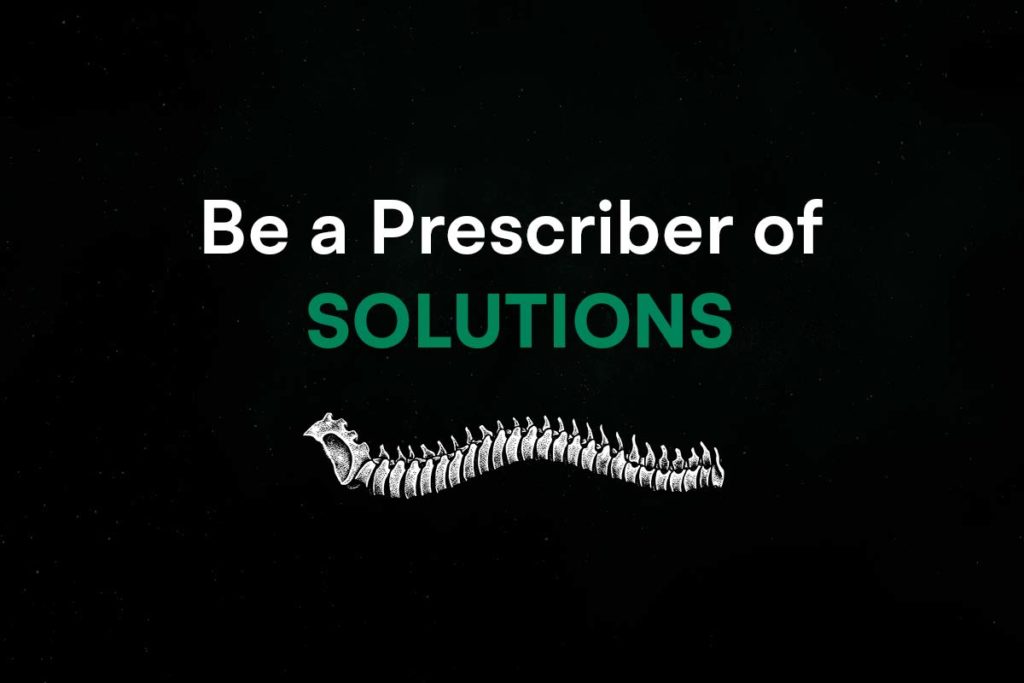
You are all officially anointed, effective immediately.
Your new title, if you choose to accept it: Prescriber of Client Solutions.
The catch: I don’t wanna hear ANY of your bullshit about “Well, I know this is not the right way to go but the client absolutely insists that…”
STOP.
Stop right there.
Take that wooly thinking and all your worthless cliches about “The client is always right” and throw that garbage out, right now.
The client is most decidedly NOT right.
Know how I know? Because they’re the client.
They’re seeking a solution to a problem that they are either unwilling or incapable of solving on their own, and they need your help.
Jot that down, repeat it a couple of times.
They need:
1.) A solution
2.) because THEY have a problem
3.) which they can’t
4.) or won’t solve on their own
5.) so they’re gonna get YOU to do it.
Which means that you’re in charge. You call the shots.
You get to decide EVERYTHING that goes into solving that problem. You even get to decide if the problem isn’t correctly defined because you’re the Prescriber of Client Solutions.
You diagnose the real underlying problems, you identify and define the entire scope of the engagement, and then you prescribe the solutions which will be attained through your regimen.
Take the words “I can’t get them to agree to…” OUT of your vernacular.
That’s not a problem with them. That’s a problem with YOU. That’s you doing it wrong.
If you can’t control the nature of your engagements with your clients then the breakdown is internal to you and your company. It’s not “them not getting it” or anything like that.
It’s a failure of leadership, it’s a breakdown in confidence, it’s a degradation of your spine, it’s weakness of will, and it will ultimately only end in sadness.
They will never thank you in the long run for this compromise.
When you go to the brain surgeon he doesn’t say “Well, I’m pretty decent at this thing. Most patients enjoy the result. We could do it a couple of different ways, and I’m open to your opinion…”
No.
He says “Relax. You’ve come to the right place. I got this. You’ll play the piano again.”
“But I never knew how to play the piano in the first place…”
“You’ll play the piano. Trust me.”
A Prescriber of Client Solutions doesn’t have to worry about the client’s bias or ignorance or preconceived notions or emotional baggage or buy-in from stakeholders or any of that.
There is only one possible course of “medication” which can be taken by the client.
Because you prescribed it and they can only get it from you.
How are they gonna get the “Infrastructure Triangle Matrix” from anyone else?
We just literally made that shit up, right now. No one else has that.
Now it can get somewhat complicated, because what if they won’t be a compliant patient?
What then?
Nothing, what then, a-hole. That’s a trick question.
If they’re not compliant then they’re not YOUR patient. They’re destined to be someone else’s patient.
Open up a phone book, in front of them, on Zoom, and scroll through to find a provider that lives in the dark ages and advertises in the phone book and write down that quack’s phone number in the chat and send them packing.
What if you know they’re gonna go and do this bad idea with someone else anyway and at the very least you’d make sure they lost the least amount of blood by just – STOP!
Not your patient.
Not your problem.
You should have a waiting room full of needy patients who WILL be compliant. They will start exercising and they will stop smoking cigarettes and they won’t host on EIG and they won’t spam 100K Realtors from a mailing list they bought on Fiverr.
You have an obligation, a duty, a solemn oath. It’s an enormous responsibility, being a Prescriber of Client Solutions.
It’s a good thing you’re charging them a crap ton.

New to GridPane?
Get started with our FREE Core plan today! We bring the software, you bring the hardware.